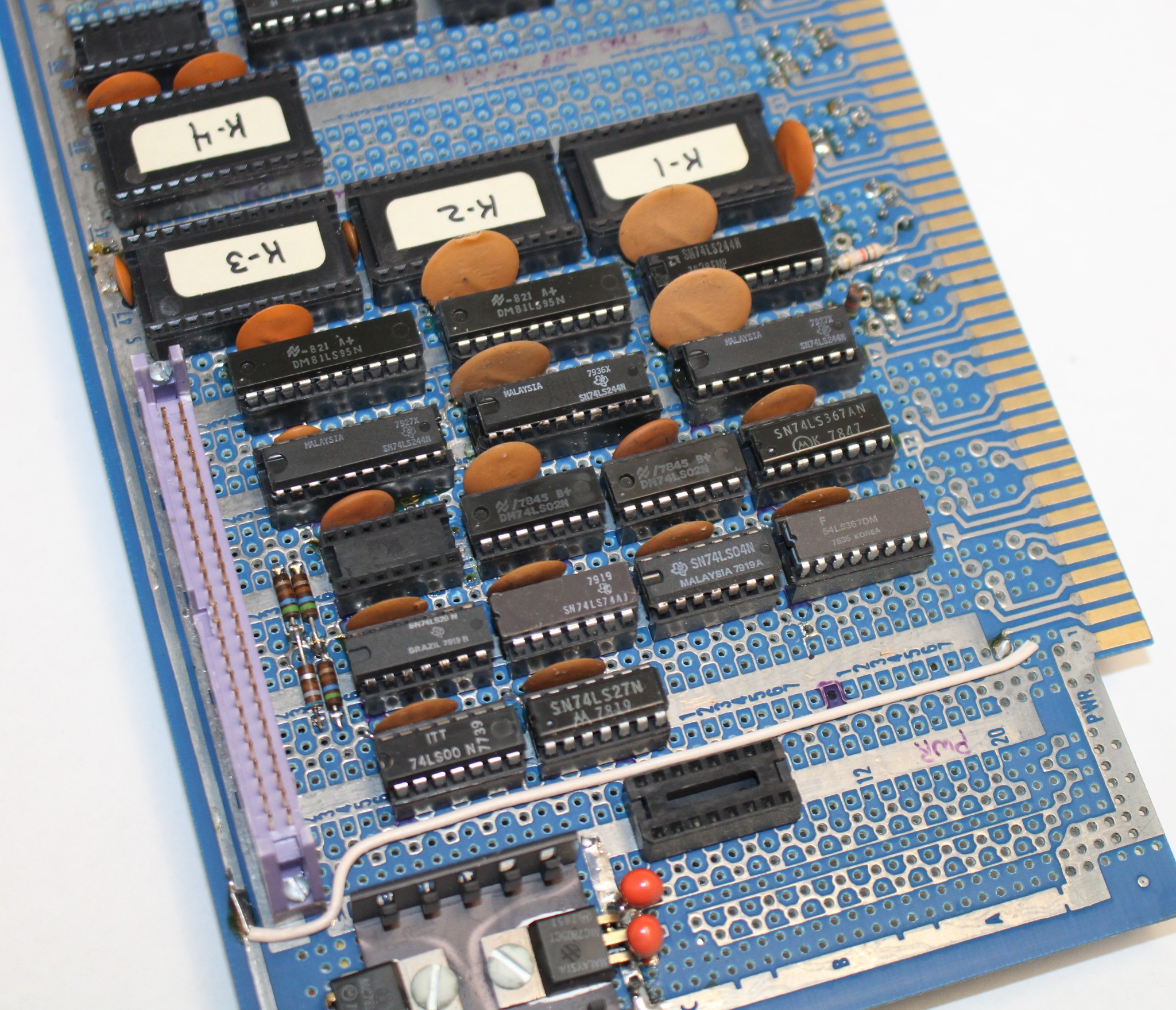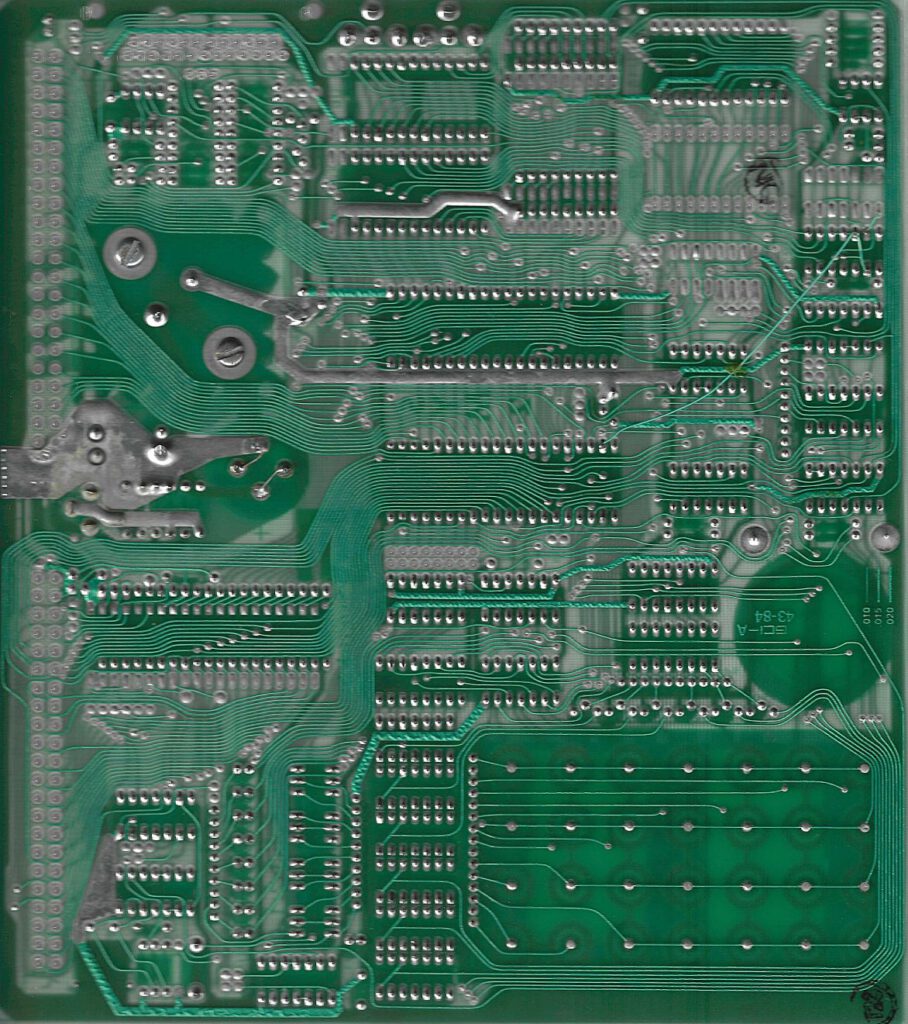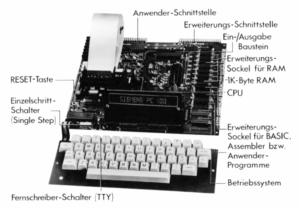
Digital Group added information
See also:
KIM-1 connectors: beware the Chinese cheap variants!
Magazines: Compute! and Compute II
All documents in the MTU pages are now clean and higher quality, about 50 new PDFs.
Focal-65 V3D for TIM and KIM-1
KIM-100

EPSON MFP image

EPSON MFP image

EPSON MFP image

EPSON MFP image

EPSON MFP image







See also:
KIM-1 connectors: beware the Chinese cheap variants!
Magazines: Compute! and Compute II
All documents in the MTU pages are now clean and higher quality, about 50 new PDFs.
Focal-65 V3D for TIM and KIM-1
Seawell Little Motherboard
Now with the manuals scanned by Clayton Seale, thanks!
See also:
KIM-1 connectors: beware the Chinese cheap variants!
Magazines: Compute! and Compute II
All documents in the MTU pages are now clean and higher quality, about 50 new PDFs.
Focal-65 V3D for TIM and KIM-1
TECMUMAS museum

In Bad König, Westenwald, Germany, Matthias Schmitt and his wife have developed a museum dedicated to Technik called TECMUMAS. Mostly retro computers from the early days to the nineteens.
Here some photos of my visit in June 2025, when I was given the opportunity to see and photograph MOS Technology KIM-4 and KIM-5 devices and the Synertek MDT 1000.
Besides those systems TECMUMAS is home to about 1400 computers and what comes with it: manuals, books, monitors and more.
The museum has a large room to display a part of the collection, regularly refreshed with objects of the collection absed upon a theme.

See the page with photos of TECMUMAS. And the following updates to pages:
Synertek MDT 1000
KIM Brochure
KIM-1 Rev F image
KIM-4
KIM-5
See also:
KIM-1 connectors: beware the Chinese cheap variants!
Magazines: Compute! and Compute II
All documents in the MTU pages are now clean and higher quality, about 50 new PDFs.
Focal-65 V3D for TIM and KIM-1
Synertek pages update: SYM-1, SYM-2, KTM
New information added to the Synertek pages:
Images of Synertek objects in my collection
SYM-1s, KTM/2-80, expansions, books, manuals, ICs
SYM-1 Manuals
VIM-1 Reference Manual May 1978 scanned
Circuit Diagram SYM-1 high resolution high quality scanned
SYM-1 Technical Notes
Manual of KTM-2 and KTM-2/80February 1981 , high quality
SYM-2 manual, photos, source of monitor and ROM dump

See also:
KIM-1 connectors: beware the Chinese cheap variants!
Magazines: Compute! and Compute II
All documents in the MTU pages are now clean and higher quality, about 50 new PDFs.
Focal-65 V3D for TIM and KIM-1
SYM-1 and SYM-2 updates


More about the SYM-1 and SYM-2 on the Synertek pages
Sources of SYM-1 and SYM-2 Monitor ROMs
Many years ago Paul R.Santa-Maria (who sadly left us in 2012) gave me the listing of the source of the Monitor ROM in the SYM-1 1.1
Delivered as a listing, with the comments from the listing in the SYM-1 Reference manual and formatted close to the printed listing.
This is the heading of the listing:
SYM-1 SUPERMON AND AUDIO CASSETTE INTERFACE SOURCES
COMBINED AND CONVERTED TO TELEMARK ASSEMBLER (TASM) V3.1
0002 0000 ;
0003 0000 ;*****
0004 0000 ;***** COPYRIGHT 1979 SYNERTEK SYSTEMS CORPORATION
0005 0000 ;***** VERSION 2 4/13/79 “SY1.1”
Since the ROM of the SYM-1 1.0, 1.1 and the ROM of the SYM-2 2.0 are available:
- Converted the listing back to source format (TASM32, standard MOS format).
- Created separate source for the SYM-1 1.0 ROM, the SYM-1 1.1 ROM (the original listing) and the SYM-2 ROM.
- Typed in the audio cassette interface sources from the 1.0 reference manual.
- Changed the SYM-2 source to the different hardware (a 6532 at AC00 instead of a VIA) and other (minor) changes.
- Binary output compared to the original ROM dumps as proof the sources match the dumps.
In this archive sources of 1.0, 1.1, 2.0 listings, binary output.
See also:
KIM-1 connectors: beware the Chinese cheap variants!
Magazines: Compute! and Compute II
All documents in the MTU pages are now clean and higher quality, about 50 new PDFs.
Focal-65 V3D for TIM and KIM-1
Another KIM-5 located!
I have found a second KIM-5, also in Germany of the KIM-5.
Photos of a KIM-5 board with the Resident Assembler/Editor 6540 ROMs in a KIM-4 motherboard. Photos from the TECMUMAS, dem Technikmuseum (Matthias Schmitt)


See also:
KIM-1 connectors: beware the Chinese cheap variants!
Magazines: Compute! and Compute II
All documents in the MTU pages are now clean and higher quality, about 50 new PDFs.
Focal-65 V3D for TIM and KIM-1
Siemens Personal Computer PC 100 Bedienungsanleitung, Ausgabe 1981/1982
A contribution by Michael Steil of the scan of ‘Siemens Personal Computer PC 100 Bedienungsanleitung, Ausgabe 1981/1982’
The Siemens PC 100 was a version of the 6502-based “AIM-65” SBC in a case and with slightly modified ROMs. Siemens offered a set of German-language manuals, which included translated Assembler (MOS Resident Assembler) and BASIC (Microsoft BASIC) manuals, but also a general manual (“Bedienungsanleitung”).
See the PC100 page for more information like manuals and ROM dumps.
 |
Siemens Personal Computer PC 100 Bedienungsanleitung, Ausgabe 1981/1982 |
See also:
KIM-1 connectors: beware the Chinese cheap variants!
Magazines: Compute! and Compute II
All documents in the MTU pages are now clean and higher quality, about 50 new PDFs.
Focal-65 V3D for TIM and KIM-1
MTU Micro Technology Unlimited pages updated
The MTU pages have been updated.
– New are 8 documents on the MT-130 page, like DISKEX (file exchange with e.g. CP/M), Wordpic, Forth 79, later version of the Full Screen editor.
– The K-1013 Dual density floppy controller has its own page now, with new information
– The MT-130 is emulated on Mame
– MTU K-1000 power unit photos
– the MTU projects by Eduardo Casino
Not yet added are the results of the ongoing discussions on the threads on forum64.de, like multipage K-1008 displays, K-1013 replica builds, CODOS V1 and V2 dissecting.

K-1008, photo by John Lucas



